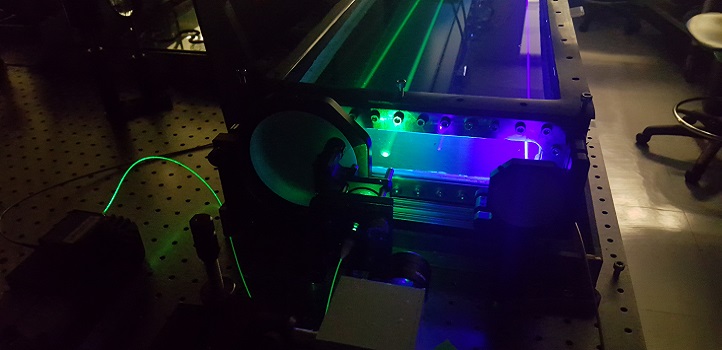Computer Science
A clearer future for underwater exploration
An optical communication system could revolutionize underwater exploration and discovery.

A system that simultaneously transmits ultrahigh-definition live video and receives feedback signals offers greatly improved underwater optical communications.
The oceans provide an abundance of natural resources that support human life, from food and medicines to energy resources in oil and gas. The deep oceans are largely unexplored yet hold the potential for new resources to support the world’s burgeoning population.
Protecting existing resources, and discovering new ones, requires technologies capable of effectively monitoring and exploring the underwater environment. Exploration is traditionally undertaken by remotely operated vehicles (ROV), but even the most advanced ROVs have limited maneuverability and are tethered to ships, thus risking damage to coral reefs and pipelines.
Now, Ph.D student Abdullah Al-Halafi and his supervisor Basem Shihada have developed an underwater wireless optical communication (UWOC) system that transmits ultrahigh-definition real-time video, while simultaneously receiving feedback signals for improving the quality of the video and controlling the movement of the vehicle.
“The challenge is to design fully autonomous vehicles that are equipped with wireless technologies able to transmit high-quality live video, combined with sensing capabilities and robotic intelligence capable of mimicking human intuition and mobility,” says Al-Halafi.
Rising to the challenge, the researchers have demonstrated a bidirectional UWOC system that uses a downlink channel to transmit ultrahigh-definition live video, integrated with an uplink channel that provides feedback on the conditions of the communications channel and that can also send control commands to manoeuvre the vehicle.
By providing updates on the conditions of communication channels, the transmitter is able to adapt the power and modulation of the video signal to the conditions of the underwater environment. For instance, if the visibility is good, more video packets can be transmitted at faster rates: but if the water clarity deteriorates, the video transmission is slowed down, maintaining video quality.
“The end user will not experience any difference in video quality as the system delivers video packets with the same definition, but at optimized power and transmission rates,” says Al-Halafi.
The system design is both cost effective and energy efficient, and it provides the highest video resolution and transfer rates so far demonstrated for an UWOC system.
“Our technology paves the way for transmission of real-time video with very high quality in underwater environments, and is expected to attract considerable interest in both academia and industry,” says Shihada.
References
- Al-Halafi, A. & Shihada, B. UHD Video transmission over bi-directional underwater wireless optical communication. IEEE Photonics Journal 10, 7902914.| article
You might also like

Computer Science
Green quantum computing takes to the skies

Computer Science
Probing the internet’s hidden middleboxes

Bioscience
AI speeds up human embryo model research

Computer Science
Improving chip design on every level

Computer Science
Sweat-sniffing sensor could make workouts smarter

Computer Science
A blindfold approach improves machine learning privacy

Computer Science
AI tool maps hidden links between diseases

Bioscience




